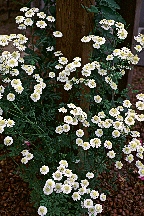Stay Informed
Popular Articles
- Hiatal Hernia: Hidden Cause of Chronic Illness
- Small Intestinal Bacterial Overgrowth (SIBO)
- Applied Lymphology: Unlocking the Secret to Pain Relief
- An Introduction to Constitutional Iridology
- The Low Down on Liver Detoxification
- An Energetic and Emotional Approach to Cancer
- Fat Facts
- Marrow in the Bones
- Blood Type and Nutrition
- Cardiac Herbs: Beyond Hawthorn
Quick Search
The School of Modern Herbal Medicine




Specific Remedies to Ease the Ache
- 5/20/2015
- Categorized in: Specific Health Problems
This is page 2 of a two-part article.
Besides the general suggestions for headaches listed on the previous page of this article, the following recommendations provide specific remedies for relieving specific types of headaches. Be aware that chronic headaches may be a sign of other health problems, including infections (dental abscesses and ear infections), hypoglycemia, heat exhaustion, diseases of the eye, thyroid problems, hypertension, hormonal imbalances, mini-strokes, exposure to various toxins, side effects of medications, and head trauma or injury. So, if your headaches are persistent, be sure to check with a medical doctor to help you identify and correct the underlying problem.
Natural Analgesics

Tension Headaches
 When you have a tension headache, it generally is felt equally on both sides of the head. The pain may be dull or squeezing, with a sensation that the head is in a tight band or a vice. You will also typically have tension and even soreness in your neck and shoulders.
When you have a tension headache, it generally is felt equally on both sides of the head. The pain may be dull or squeezing, with a sensation that the head is in a tight band or a vice. You will also typically have tension and even soreness in your neck and shoulders.
The quickest way to ease a tension headache is to drink a lot of water and massage your neck and shoulders. Apply lobelia or magnesium oil while doing the massage for better results. Then follow with a Topical Analgesic Formula like Neck and Shoulder Rub (Tiger Balm), Olbas Oil, Tei Fu oil (Nature's Sunshine) or White Flower Analgesic Balm. Anything that helps your body relax will help ease the pain of a tension headache, including the taking magnesium or kava kava internally and then lying down to relax.
Tension headaches are often caused by poor digestion and constipation. If you have digestive upset, acid indigestion or sluggish bowels, take something to clear out your gastrointestinal tract. For gas and bloating, try peppermint or chamomile tea, ginger or enteric coated peppermint oil. If you're constipated, do something to relieve the constipation. Generally speaking, the headache will go away as soon as the digestive tract is clear. Alkalizing the body is also helpful for easing problems with chronic tension headaches. This can be accomplished by eating more fruits and vegetables and less meat and grains.
Migraine Headaches
Migraine headaches are generally more difficult to relieve than simple tension headaches. Migraines typically occur with vision disturbances or nausea. The pain may feel like your head is throbbing, pounding or pulsing. It also tends to start on one side of the head, although it may spread to both sides. Migraines are believed to originate in the brain due to neurotransmitter imbalances, which can change blood flow patterns in the head.
Migraines are often liver related and respond well to bitter herbs that help detoxify the liver. In most migraines it seems like too much blood and energy is flowing upward into the head. Bitters draw blood and energy downward into the digestive tract and eliminative organs.
 For pain associated with Migraine headaches, try a good Migraine/Headache Formula. These typically contain feverfew along with butterbur, periwinkle and/or scullcap. Feverfew is a very popular herb for migraines because there are studies suggesting it can reduce both the symptoms and the severity of migraines in many people when taken regularly. It is important to understand that feverfew is not very effective at easing a migraine once it has started. When taken regularly, however, it can help prevent migraines and reduce both their frequency and severity.
For pain associated with Migraine headaches, try a good Migraine/Headache Formula. These typically contain feverfew along with butterbur, periwinkle and/or scullcap. Feverfew is a very popular herb for migraines because there are studies suggesting it can reduce both the symptoms and the severity of migraines in many people when taken regularly. It is important to understand that feverfew is not very effective at easing a migraine once it has started. When taken regularly, however, it can help prevent migraines and reduce both their frequency and severity.
Feverfew and other bitters work best on vasodilative migraines, where it feels like the head is pounding or exploding outward. Some people have vasoconstrictive migraines where the head feels like it’s being squeezed or there is a tight belt around the head. For people with this type of migraine, taking ginkgo biloba regularly may help. Ginkgo increases blood flow to the brain. Periwinkle can also be helpful for vasoconstrictive migranes.
If you are prone to migraines, it may also be helpful to take a Liver Tonic Formula or do a cleanse. These remedies help clear toxins out of the liver and improve liver detoxification, which can help to balance neurotransmitters and reduce the frequency and severity of migraines. Where allergies are involved butterbur may be helpful.
Neck and shoulder massage can also be helpful for easing migraines. Apply lobelia and capsicum extracts (mixed in equal parts) to the neck and shoulders and then massage these areas to release any knots, pain or stiffness. Follow this with a Topical Analgesic like those mentioned earlier. You can also apply a drop of the Topical Analgesic to each temple. Many people have found relief from migraines within 20-30 minutes using this technique.
Cluster Headaches
Cluster headaches are severe and often occur after a person falls asleep. The burning, sharp pain typically occurs on one side of the head, often around the eye. There is often swelling under or around the eye (or eyes), tearing, red eyes, runny nose, and a flushed face.
Cluster headaches may be caused by a lack of oxygen from congested sinuses or other problems. They may also be a sign of problems with the hypothalamus, hormonal imbalances, digestive disorders, nerve dysfunction, structural issues, or stress.
The massage to the neck and shoulders with lobelia, capsicum and a Topical Analgesic is often helpful. Also consider detoxification therapy, chiropractic care or craniosacral therapy. If you have problems with cluster headaches, work with your natural health care advisor to try to identify the underlying causes.
Sinus Headaches
Sinus headaches are the result of sinus infections and are felt in the sinus areas above and below the eyes. However, not all headaches felt in this area are related to the sinuses. It is only a sinus headache when there is infection present. Along with taking Colloidal Silver and/or Goldenseal and Echinacea to combat the infection, fenugreek and thyme is a dependable herbal combination for sinus headaches. Inhaling the vapor of Olbas or Tei Ful is also helpful.
It is possible to get relief from headaches naturally. If these suggestions aren't sufficient consult with a professional herbalist or consider some of the resources below for additional information.
Additional References
Definitive Guide to Headaches by Robert Milne, MD, Blake More and Burton Goldberg.Freedom from Headaches by Joel R. Saper, MD and Kenneth R. Magee, MDModern Herbal Medicine by Steven Horne and Thomas Easley
